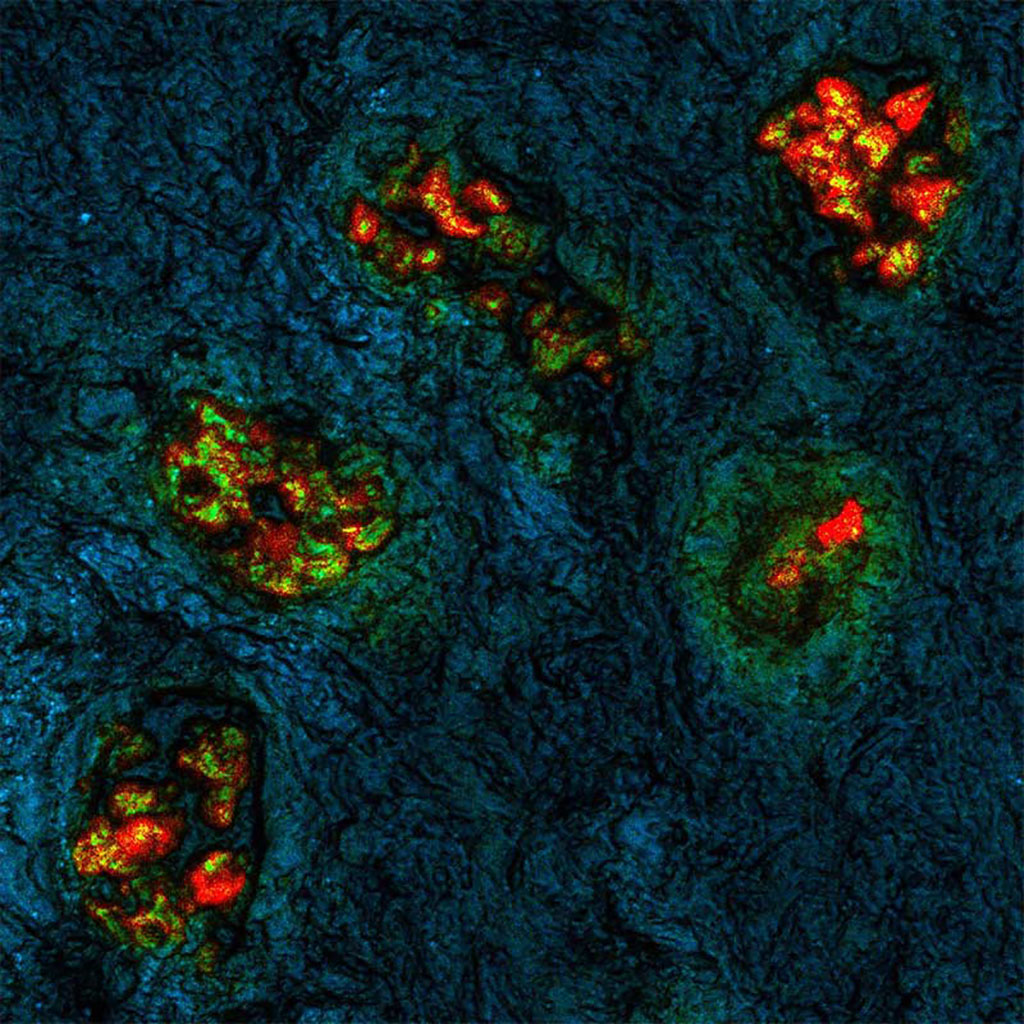Innovative Technique for Distinguishing Tumor from Normal Tissue to Improve Surgical Resections
Posted on 17 Oct 2023
Taking out a tumor from a patient while leaving healthy tissue untouched is a delicate operation, often dependent on the surgeon's eyes and hands to guide the scalpel. Several technologies like fluorescence imaging and advanced microscopy have been explored to better visualize tumors during surgery. However, these methods haven't gained widespread use and are generally applicable only to certain kinds or subtypes of cancer. Fluorescence imaging involves using dyes to highlight cancer-specific molecules, but traditional imaging methods can be unreliable in identifying the boundaries between tumors and healthy tissue. This is due to the varying expression of these molecules both within and among different tumor types. Now, a new visualization tool combines high-speed cameras and fluorescent injection to differentiate tumor tissue from normal tissue across cancer types during resection surgery.
The new imaging technology, known as fluorescence lifetime (FLT) imaging, was developed by a team led by investigators at Mass General Brigham (Somerville, MA, USA). Instead of solely depending on dyes to target cancerous cells, the new method employs high-speed cameras to observe changes in the property of light emitted by the tissue. Prior studies in animal models had shown that when mice with tumors were injected with a dye called indocyanine green (ICG), the tumor tissue displayed a longer fluorescence lifetime compared to the surrounding healthy tissue. Capitalizing on this discovery, the team began to test this method on human samples, specifically those from patients about to undergo liver surgery who had been given an ICG injection at least one day prior.

Expanding on this initial work, the researchers partnered with multiple institutions to assess tissue samples from over 60 patients, suffering from various types of cancer including liver, brain, tongue, skin, bone, and soft tissue. They discovered that the FLT shift was consistent at the cellular level across these different types of tumors. Moreover, the method could also differentiate between benign and cancerous lymph nodes. It achieved an impressive accuracy rate of over 97% in distinguishing tumor tissue from healthy tissue. It's worth noting that while ICG has received FDA approval for other medical uses, it is not yet approved for clinical use as a tumor marking agent. The researchers are planning a larger clinical trial to further investigate the safety and effectiveness of using FLT imaging with ICG in tumor identification during surgical procedures.
“This technology has taken us to the brink of a revolution in solid tumor surgery,” said Mark Varvares, MD, chief of Otolaryngology–Head and Neck Surgery at Mass Eye and Ear. “By using the advanced imaging techniques combined with the dye, surgeons in the near future will have the ability to more completely remove all malignant cells during tumor surgery while at the same time, with confidence, spare normal tissue, enhancing postoperative function and in some cases, the patient’s appearance.”
Related Links:
Mass General Brigham













